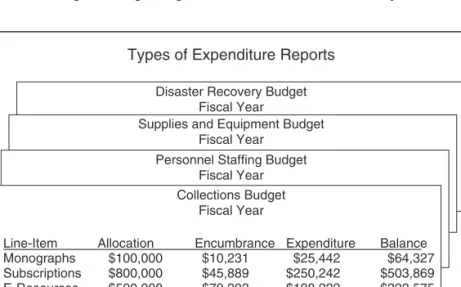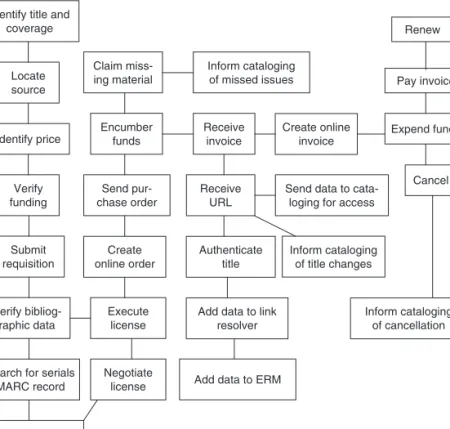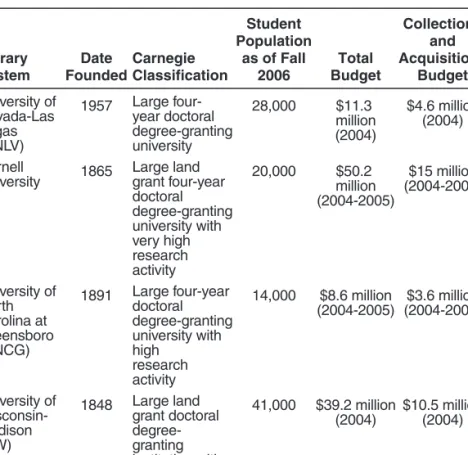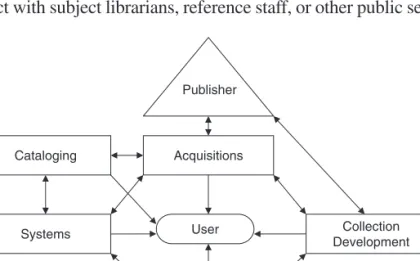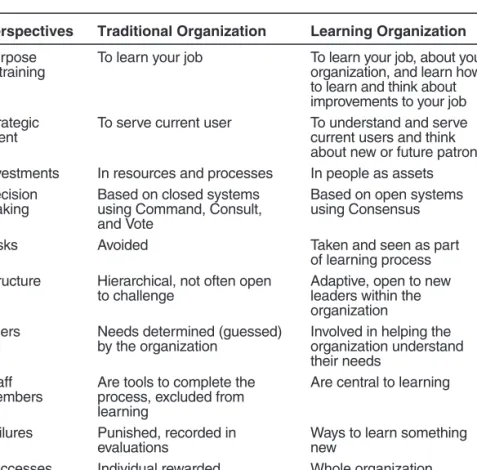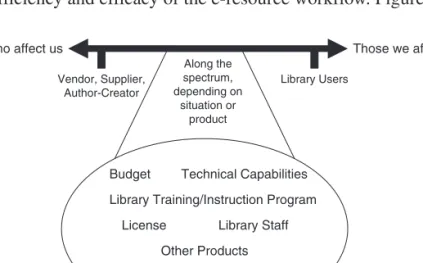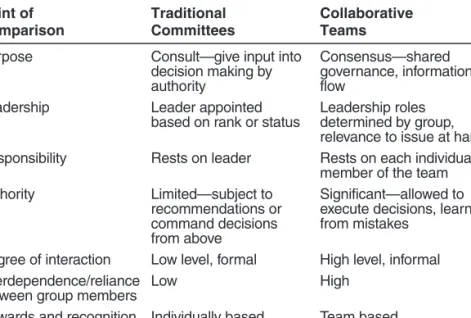It covers the full range of electronic resource management issues from procurement to access, selection to standards, and provides useful information for both the experienced electronic resource manager and the electronic resource novice. I highly recommend this resource to all libraries considering expanding their electronic collections or converting their print collections to electronic collections.”. Editors Maria Collins and Patrick Carr have done an excellent job identifying leading electronic resource librarians to collaborate on this book.
Lots of information on how electronic resources are evolving and will evolve in the future. The chapters on e-journal management tools, archiving, and e-resource management workflows were timely and extremely informative for librarians spending more time and energy on electronic resources. Both the novice and the experienced librarian will find this book instructive and engaging.”
Managing the transition from print to electronic journals and resources: A guide for library and information professionals. To purchase your copy of this or any of Taylor & Francis or Routledge's collection of thousands of e-books, please go to www.eBookstore.tandf.co.uk.”.
Enhancing E-Resources by Studying Users
EVOLVING TOOLS
The Role of the Online Catalog
ERM Systems: Background, Selection,
Data Collection Methodology and Objectives 244 Overview of the case libraries and their e-resource.
EVOLVING STRATEGIES AND WORKFLOWS
Analyzing Workflows and Realizing
Issues, Changes, and Trends in Cataloging
Workflows for Managing E-Resources
She's excited to learn what things look like from both sides of the library aisle. She is currently the interim head of acquisitions, responsible for overseeing daily operations, managing the library materials budget and negotiating licenses. Mark Ellingsen is Head of the Web, Database and Library Systems Group at the University of Bristol, UK.
Nancy Fried Foster is Senior Anthropologist and Co-Director of the Digital Initiatives Unit for River Campus Libraries, University of Rochester. She is currently involved in the Alternatives to Licensing initiative and is a member of the NISO SERU Working Group. She is the coordinator of the Electronic Resources & Libraries (ER&L) Conference, a forum for information professionals to explore ideas, trends and technologies related to electronic resources and digital services.
The book is a "soup to nuts" smorgasbord that captures all aspects of the transition. Grogg provides a whirlwind tour of the diverse range of tools that libraries currently use to manage and provide access to e-resources, including A to Z e-journal lists, OpenURL link resolvers, MARC record services, and meta-search tools.
EVOLVING COLLECTIONS
Budgets have several aspects: (1) the financial allocation itself, (2) the process of allocating the funds for specific purposes and objectives, and (3) the management of the funds. An important part of e-resource budgeting is the ability to tie the allocation for the format (the e-resource line item) to the acquisition of the e-resource title or package. This model remains popular due to access to proprietary printing that is archived locally.
This chapter will describe and discuss some specific criteria for selecting e-resources. Content selection criteria assess the quality and quantity of materials covered by the e-source. When evaluating the content of a resource, one of the first steps is to assess how many titles and/or subjects are included in the resource.
Evaluating the size of the full-text content of e-resources adds an additional level of complexity to the evaluation process. Consider the amount of full text available electronically compared to the printed version of the same source. One of the last issues to consider in terms of content criteria is where the resource is indexed.
In addition to the functionality of the resource, it is also important to consider the usability of the resource. For example, several conditions in the license will affect the availability of the resource. A balance will need to be struck between the extent of access to be provided and the cost of the resource.
Much of the content contributing to the information explosion is in the form of communication in electronic arenas. Erik Oltmans and Adriaan Lemmen, "E-Depot in the National Library of the Netherlands," Serial Publications 19, no. The respondent described the overall impact of the pay-as-you-go approach to serials as minimal in terms of hiring additional staff.
All expedited processing of pay-per-view article submissions is performed by ILL campus staff. Since UNCG Libraries has participated in the Carolina Consortium, most access to pay-per-view series has decreased (approximately 80 percent).
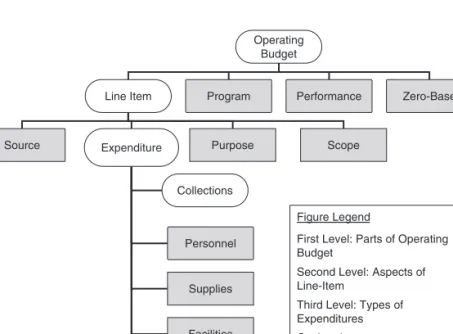
EVOLVING STAFF AND PARTNERSHIPS
See ERMI [Electronic Resource Management Initiative] Appendix B for an additional outline of print and electronic workflows. Each of these conceptual approaches provides part of the framework needed to incorporate adaptive learning into the library environment. A clear process outlines the worker's decisions with tasks when handling a physical object, and every creativity is in the details.
In the dynamic e-resource management process, decisions depend much more on product connectivity within a web of experiences. Since it does not need to be codified in a separate procedure, the information remains stored in the ongoing experiences of stakeholders. Decisions are made in order to respect the priorities of the existing system, excluding procedures from most challenges to maintain.
Two examples of the use of collaboration or collaborative teams to facilitate electronic resource management are presented in the text below. Jewell et al., Managing Electronic Resources: Report of the DLF ERM Initiative (Washington, DC: Federation of Digital Libraries, 2004), http://. Senge, The Fifth Discipline: The Art and Practice of the Learning Organization (New York: Doubleday.
One of the most fundamental factors influencing ERM employment is the proliferation of e-publications. In the 1990s, e-journals and e-resources represented a much smaller part of the collection than traditional library materials such as print. The concentration of these e-resources duties in one or two librarians resulted in the creation of an electronic resources librarian.
Susan Gardner, "The Impact of Electronic Journals on Library Staff at ARL Member Institutions: A Survey and a Critique of the Survey Methodology," Serial Review, 27, no. Title of the person to whom this position previously reported under previous section (if different from answer above in question 5):. Indeed, the library could build an IR and then find that none of the faculty members deposit their content into it.
We also investigated their use of digital tools in their work and library use. However, due to the inconsistencies described in the previous section, faculty members are not contributing as much content to DSpace as institutions might have hoped.
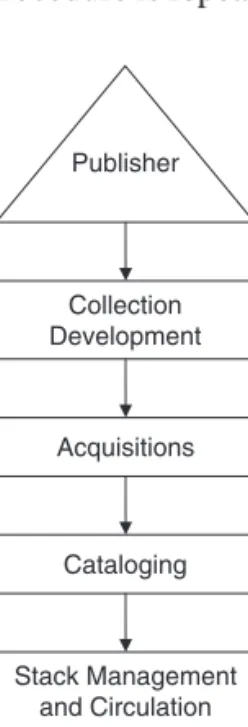
EVOLVING TOOLS
Reports of the death of the online catalog, while becoming more frequent and urgent, have been greatly exaggerated. While there have always been problems finding and interpreting catalog serial records, these problems have undoubtedly gotten worse over the past decade as we have experimented with different ways of promoting remote electronic publications through our online public catalogs (OPACs). ). This chapter examines the current nature of the catalog, critiques of its underlying structure and content, add-ons and spin-offs that try to address some of its shortcomings, and specific problems for finding series in a tool dominated by monographs.
A review of the catalogs of thirty top rated members of the Association of Research Libraries (ARL) reveals the diversity of approaches that exist in the market. It also shows that, while the majority of libraries now provide finding aids outside of the catalog—mainly A-Z lists of e-journals and databases—the catalog still plays a key role in identifying a library's serial resources, both print and electronic.
